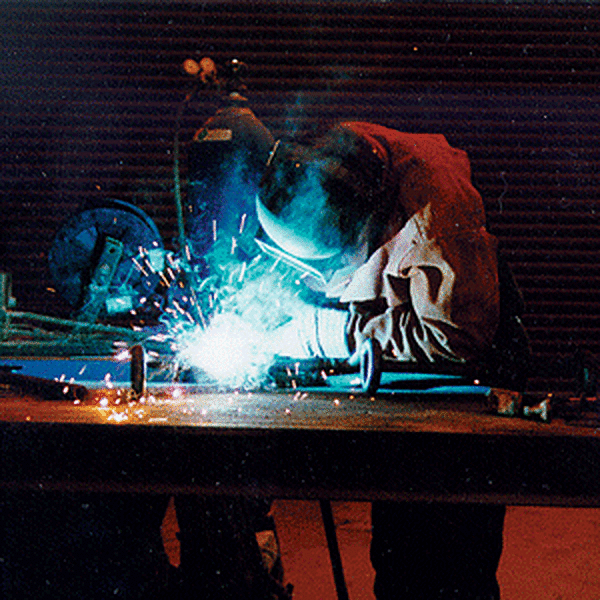Welding
All commonly practiced welding and cutting techniques can be used on galvanized steel. In the welding of galvanized steels, no special skills are necessary, but welding conditions usually require closer control than for uncoated steels. Galvanized steel welding procedures are simple and well established.

Welding before galvanizing ensures the whole structure is fully coated with zinc and that the zinc coating at the weld area is the same thickness as the coating on the rest of the steel part. In order to achieve the same coating thickness, it is recommended that the weld filler metal be comparable chemistry to the steel of the base material. If the weld filler metal is a different composition than the steel being joined, it may react with the zinc at a different rate and give a thicker, or thinner, coating over the weld. To prevent an increased reaction of the weld material with the molten zinc, the filler material should have less than 0.3 percent silicon content.
Welding after galvanizing may be necessary if the final structure is too large to be dipped in a galvanizing bath or for structures that must be welded in place. The tensile, bend and impact properties of welds on galvanized steel are equivalent to the properties of sound welds in uncoated steels. Again, materials used for weld filler should be closely compatible with that of the base steel to provide good weld qualities. Welding galvanized steel specifications are derived from the American Welding Societys (AWS) specification D-19.0, Welding Zinc Coated Steel. This specification calls for welds to be made on steel free of zinc to prevent strength reduction through zinc inclusion in the weld itself. The zinc coating should be removed at least one to four inches from either side of the intended weld zone and on both sides of the steel part. Grinding is the most effective means of removing the galvanized coating. Once the weld is completed, the area of the weld can be repaired using procedures described in ASTM A780 to complete the corrosion protection on all surfaces.
